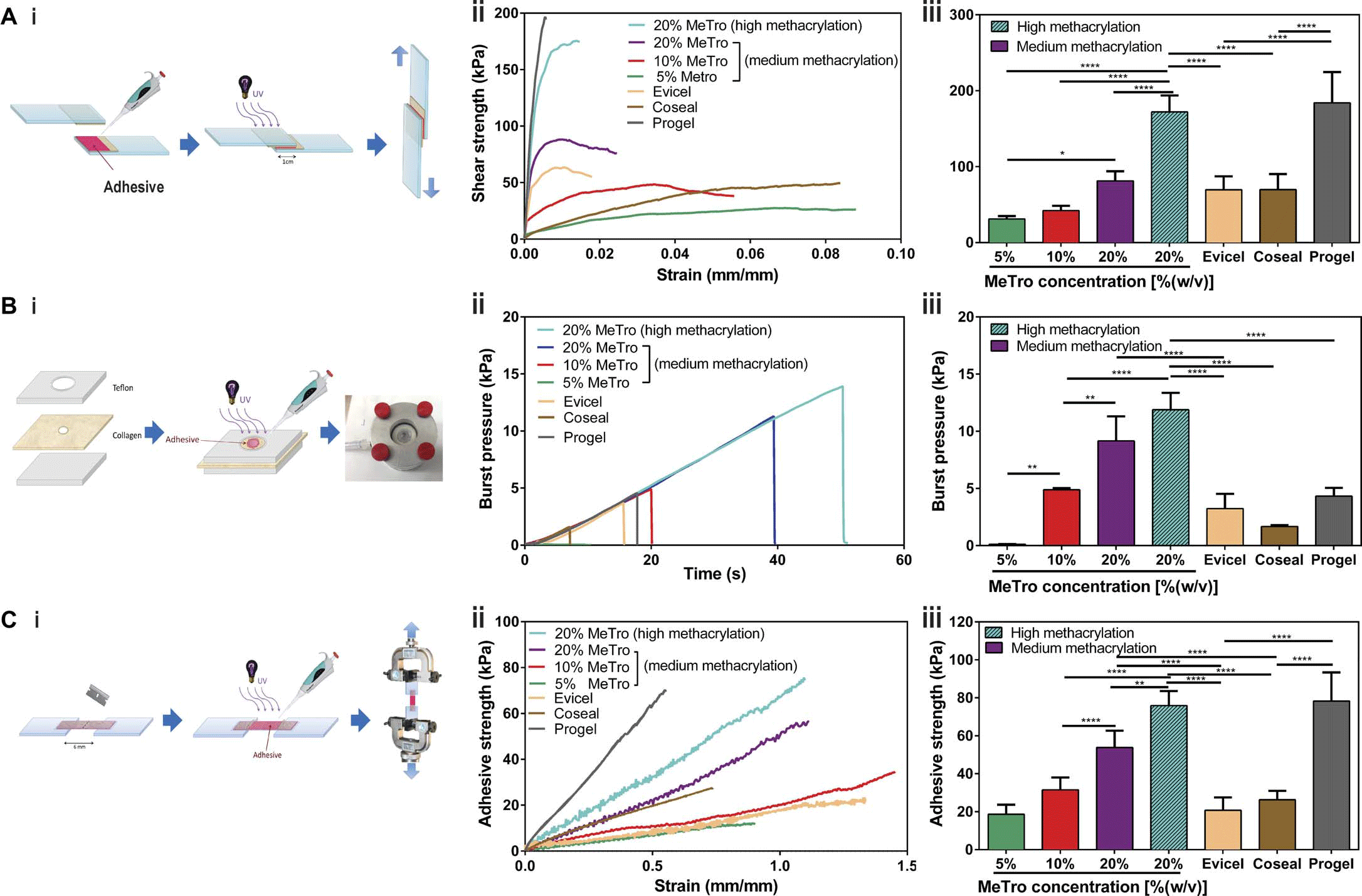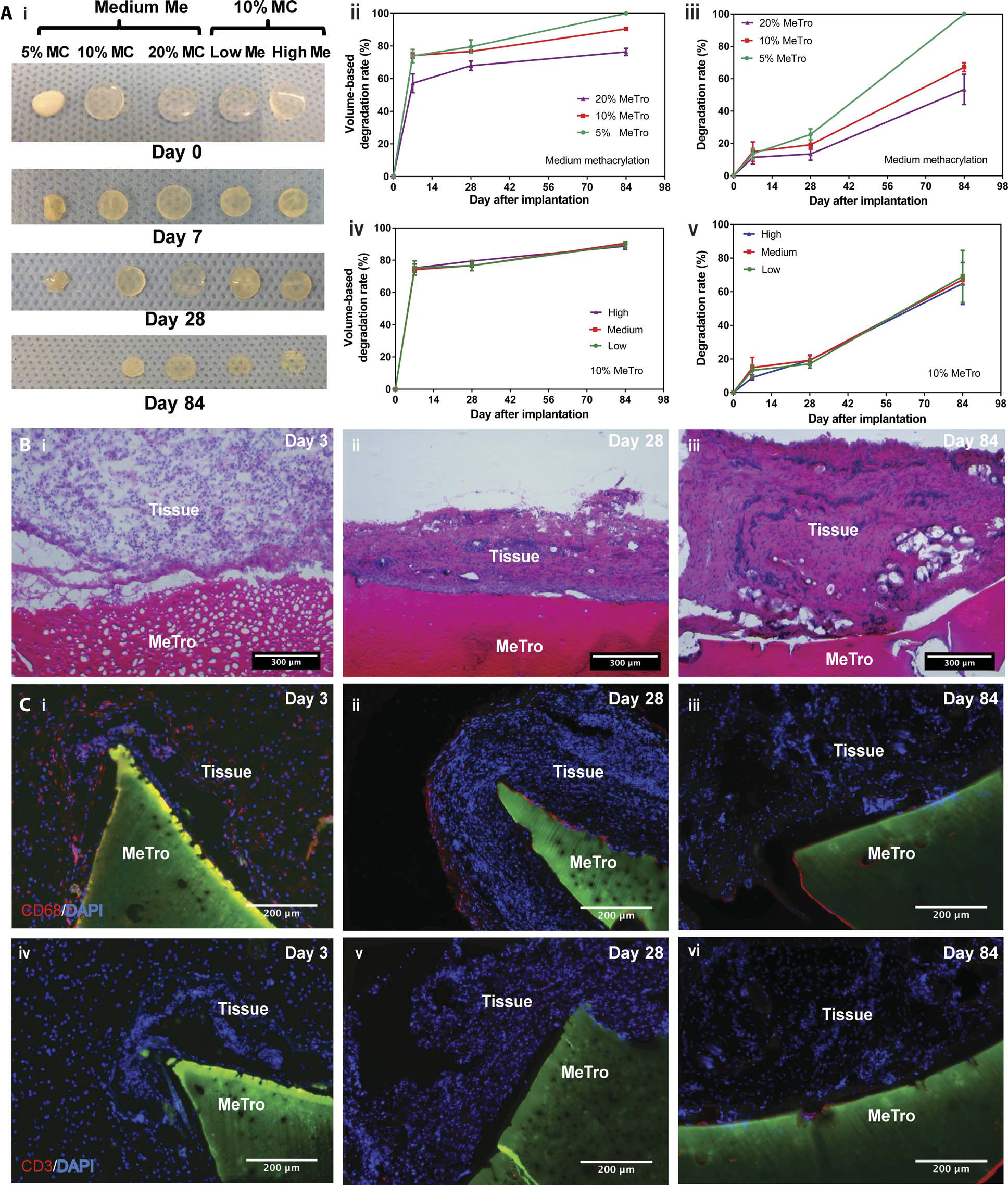 A scanning electron micrograph (left) and histological staining (right) both show how MetRo gel (top) overlaps the damaged lung area, binds and blocks the surface of the tissue. Stretch fabric tightly sealed without seams or staples
A scanning electron micrograph (left) and histological staining (right) both show how MetRo gel (top) overlaps the damaged lung area, binds and blocks the surface of the tissue. Stretch fabric tightly sealed without seams or staplesFor healing cuts on the human body are traditionally used stitches and staples. They keep tissues close to each other, greatly accelerating healing and resisting mechanical stress on the tissue. Although sutures are commonly used after surgery, there are often situations where they do not help stop the leakage from the organ. For example, air leakage from the lung is one of the most common complications after surgery.
In addition, suturing is problematic in critical conditions of lack of time or in hard-to-reach areas of the body. Finally, stitches with staples cause physical damage to the surrounding tissues around the wound and increase the risk of infection, which is also not good.
Scientists have long, but so far unsuccessfully working on an effective “glue” for the skin, blood vessels and other organs, so that it would be deprived of all the above-mentioned deficiencies and effectively biodegradable. All existing synthetic sealants that are approved for use by the Food and Drug Administration (FDA) have certain drawbacks. Some are difficult to apply due to inelasticity. Others are quite resilient, but do not adhere tightly to moving tissue, such as lung tissue. In general, now there is no one commercially available material that is allowed to use without auxiliary seams or staples. A group of American and Australian chemists believes that it has developed such a material -
MeTro, a
universal, highly elastic biogel (an abbreviation for methacryloyl-substituted tropoelastin). They published a
scientific article in which they demonstrate an absolutely reliable closure of air leakage from the lung using a new sealant, as well as evidence that biogel contributes to faster wound healing.
 Properties of MetRo Biogel in Comparison with Evicel, Coseal and Progel Wound Bonding Sealants: shear test (A), burst pressure (B) and adhesion strength (C), i.e. adhesion strength
Properties of MetRo Biogel in Comparison with Evicel, Coseal and Progel Wound Bonding Sealants: shear test (A), burst pressure (B) and adhesion strength (C), i.e. adhesion strengthMetRo may be the first biogel in the world that heals wounds without using sutures. “A good surgical sealant must combine several characteristics: it must be elastic, adhesive, non-toxic, and biocompatible,”
says Nasim Annabi, lead author of the research. - Most sealants on the market have one or two of these qualities, but not all. We managed to create a material that can have all the listed properties. ”
Methacryloyl tropoelastine is a protein derived from the elastic fibers of human tissue (elastin). It is present in all elastic tissues of the body, such as the walls of the arteries, skin and lungs. It is not a synthetic substance, it is grown in E. coli bacteria from living human material, therefore it has better biocompatibility than synthetic sealants. After applying the wound sealant must be irradiated with ultraviolet light and treated with a reagent - methacrylate. Then the tropoelastin fibers are combined, and the material becomes extremely elastic, completely tightly and tightly closes the wound.
 Biocompatibility and degradation of MetRo gel in mouse subcutaneous tissues
Biocompatibility and degradation of MetRo gel in mouse subcutaneous tissuesExperiments on mice and pigs revealed no signs of toxicity of the material and demonstrated its controlled degradation over time. All tests, including shear, burst pressure and adhesive strength tests, showed its advantage over existing synthetic sealants such as Evicel, Coseal and Progel.
Human trials will begin soon. Scientists believe that MetRo Biogel is able to connect even the cells of the heart tissue, so that it can be used including for the treatment of cardiovascular diseases.
The scientific article was
published on October 4, 2017 in the journal
Science Translational Medicine (doi: 10.1126 / scitranslmed.aai7466,
pdf ).